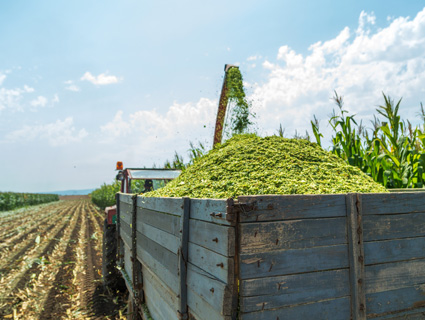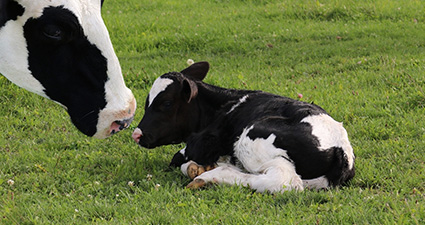The genetic capacity of dairy cattle determines milk productivity and fat content. It is not possible to enhance milk production beyond any livestock’s genetic capacity. But most dairy farmers are unable to obtain even the genetic potential of their dairy cattle.
One factor that adversely impacts milk productivity is malnutrition. Other stress factors also contribute to lower productivity.
Therefore, the easiest way to increase the milk productivity is to focus on providing dairy animals with adequate and well-balanced nutrition.
Some nutritional pointers that can help in increasing milk fat content are:
1. Emphasis on high-quality forage:
It is important to harvest and preserve high-quality forages. Ensure that that the forages are harvested at the right time and contain the right moisture content. Augment this with correct packing and storage systems. For instance, use twin layers of plastic with an inoculant. The aim is to make sure that the ensiled forages are correctly fermented and stays free of moulds and wild yeasts. Poor quality of forages that are not stored properly will have an adverse impact on the milk yield as well as the fat content. Mouldy forage negatively impacts the rumen fermentation.
2. Delivery of correctly mixed dairy feed rations
Over-mixing or under-mixing dairy feed rations is bound to change the composition of the dairy animals’ nutrition and its fermentation in the rumen. Either situation will impact the rumen pH and thereby the dairy animal’s health, resulting in reduced component production. It is, therefore, essential to verify that the herd’s total mixed ration (TMR) is mixed correctly. This will provide a consistency in dairy rations at every feeding and enhance milk fat production.
It is also advised to regularly perform maintenance on the TMR machine thereby ensuring proper working condition.
Milk fat levels are also affected by correct feed delivery and availability. It is advised to consistently increase the feed to reduce slug feeding (sudden increase in grain or concentrate). Slug feeding raises rumen pH and results in subclinical rumen acidosis that adversely impacts forage fermentation and milk production.
3. Evaluation of forage digestibility as well as fibre levels
Constantly assess fibre as well as forage digestibility intensities in the dairy animals’ diet. Approximately fifty per cent of milk fat precursors are composed of short-chain fatty acids that are produced during the process of rumen fermentation of dietary fibre. A significantly better quality of forage comprising of digestible fibre will increase milk fat yield.
The management of neutral detergent fibre digestibility (NDFD) is another means to ensure the ideal level of milk fat production. Several components and their physical characteristics determine optimal dietary target levels. A nutritionist is the best guide to determine the target levels for your herd’s diets.
Another good indicator of optimal fibre and forage digestibility levels is chewing of cud. At least half the number of animals should be chewing their cud at any given time. Observe the herd for cud chewing when they are undisturbed.
4. Constantly check starch and fat levels
It is essential to know starch digestion rates within the rumen while trying to achieve an enhanced milk fat production. Some components possess faster rumen fermentation rates than others, thereby influencing the rumen dynamics. Variations in elements have a significant impact on milk fat production levels. Testing for degradable starch within the rumen facilitates a quick analysis to establish if starch is suppressing fat levels.
Testing of starch levels through enables assessment starch levels within dairy feed rations and gives an indication of how the starches perform.
Milk fat production is also facilitated through types and quantity of dietary fat which also play an important role in promoting sustained lactation without depleting body reserves. It is advisable to maintain a common dietary fat level of 5%.
Purina® Energy Booster delivers an optimal combination of fatty acids thereby providing a cost-effective as well as a balanced approach to achieve milk fat levels while supporting other body needs for energy. Energy Booster can be used in combination with our flagship products Milkgen 8000 and Pragati which are best in class for milking animals.
5. A balance for Methionine and Lysine
Amino acids play an important part in maximizing milk and component production. An optimal balance of amino acids supports a higher milk component yield as well as prevents milk fat depression.
Lysine and rumen-protected methionine sources like Purina cattle feed in diets also support milk component yield.
However, rations of amino acids can only be balanced once a complete analysis of nutrition is conducted.
The first step is ensuring that the diet comprises of the best quality of fodder. This is to be regularly provided to the herd. This must be followed by a balanced measure of amino acids.
These are some useful guidelines that are helpful in improving milk production and components like fat.


